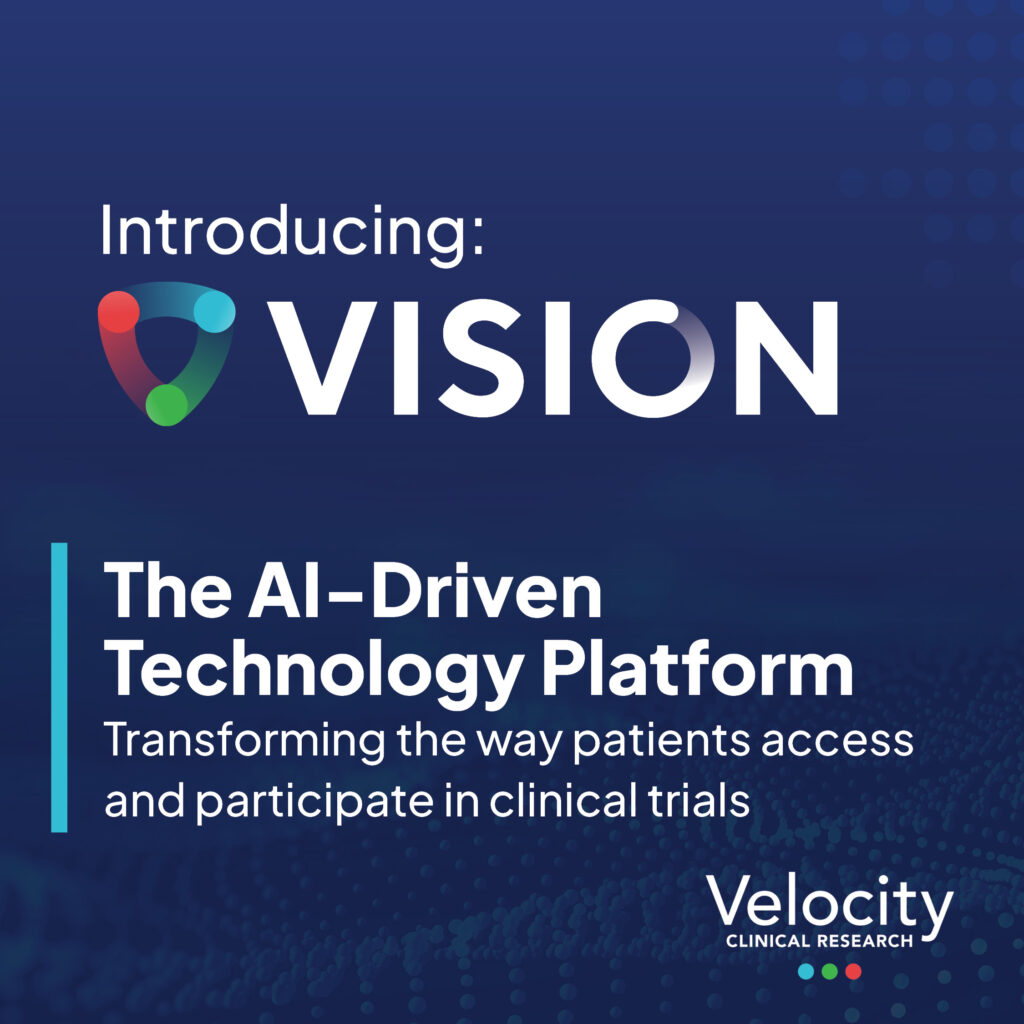Velocity Clinical Research, the leading multi-specialty clinical sites business, has launched its VISION technology platform to transform the way patients access and participate in clinical trials.
Velocity’s VISION technology unifies patient experience and recruitment capabilities across nearly 100 locations globally. The AI-driven platform includes VISION Engage, a patient-focused mobile application that has had 30,000 downloads and VISION Recruit, an engine that offers patient convenience and scales recruitment through intelligent automation.
During VISION’s beta phase in Q3/Q4 2023, patients successfully self-screened and self-scheduled appointments at Velocity sites across the U.S. More than 250,000 potential patients were contacted and 650+ participants were randomized across 25 studies.
The pre-screening process was accelerated by 650%, compared with traditional methods. VISION automated the prescreening work of an equivalent of 20 full-time employees in one month, giving site staff more time to dedicate to patient care.
Raghu Punnamraju, Chief Technology Officer at Velocity Clinical Research, said, “We have built VISION as a ‘digital twin’ of what happens at site level to increase trial participation and increase diversity. Despite a boom in tech funding and monumental advancements in artificial intelligence and machine learning, tech advancements have not yet translated into marked efficiency improvements at clinical research sites. Most clinical trials still fail to meet enrollment timelines, with most delays occurring at the site level. To gain efficiency, it’s imperative for technology to enhance clinical trials at their most critical point — closest to patients, at the sites.”
VISION Engage has been downloaded by more than 30,000 people. The app enables users to upload health data, self-schedule appointments, and indicate their interest in certain therapeutic areas. The in-app prescreening feature uses simple questionnaires to assess eligibility, with a learning algorithm refining its evaluation over time. The app is also being developed to streamline study stipends with in-app payments, increasing patient satisfaction and reducing administrative burdens for site staff.
VISION Recruit expedites the participant recruitment process. It employs sophisticated algorithms to match potential participants with specific inclusion/exclusion criteria, while also considering trial diversity targets to enhance conversion rates. Potential participants are notified via email, text or in-app notifications and the tech leverages AI to numerically rank candidates based on their likelihood of eligibility for specific studies.
Paul Evans, PhD, Chief Executive and President of Velocity, said: “Velocity is scaling for a purpose. To date, patient recruitment technology has never been designed by site organizations who are arguably the closest to the process, until now. This technology eliminates the hand-offs inherent in most centralized recruitment methods, which is where patient drop out is most apparent. Velocity’s unparalleled reach, people and tech is accelerating Sponsors’ and CROs’ clinical development strategy with better analytics, data and tracking, giving them a greater level of access, control and predictability.”
Velocity will continue to develop the VISION platform, adding insights capabilities using AI and trial decentralization methods in the future, leading to greater site productivity and participant retention.
Velocity acquired tech company TrierHealth in January 2022. Since then, its tech hub headquartered in Hyderabad has grown to more than 70 employees.
Velocity’s number of sites is rapidly growing. The company announced its further expansion in Europe at the beginning of 2024, acquiring seven more sites in Poland and Germany, with 17 European sites in total and nearly 100 globally.
Velocity’s sites are fully integrated via a centralized infrastructure and common technology backbone, allowing for superior patient enrollment and consistent, high-quality data delivery. As a result, CROs and biopharma companies can benefit from faster and simplified access to patients in North America and Europe.

